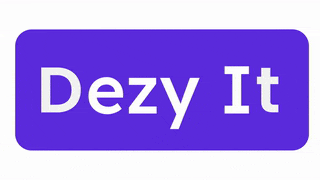Define—State Your Users' Needs and Problems
- navjot singh
- May 19, 2021
- 3 min read
In this blog, we will be discussing the "Define" step of Design Thinking and the various methods involved. We will be discussing the importance of Defining a User's Needs in Design while simultaneously discussing the various methods in which Defining is important in Design Thinking and Design Sprints.

In the Define stage, one must synthesise the observations made about the users from the Empathise stage. A great definition of your problem statement will guide you and your team’s work and kick start the Ideation process (next stage) in the right direction. The define phase is where you’ll establish a clear idea of the exact problem you are trying to solve for the user. You can then easily shape this into a problem statement which will act as your northern star throughout the design process.
The empathize phase precedes the defined stage. You have already learned a lot about your users through interviews and using various immersion and observation techniques. Once you have a good idea of who your users are and, most importantly, their wants and needs, you’re ready to turn this empathy into an actionable problem statement.
The relationship between the empathize and define stages can best be described in terms of analysis and synthesis.
Analysis
The analysis is about breaking down complex concepts and problems into smaller and more understandable constituents. During the first stage of the Empathise stage, we do that when we observe and document details that relate to our users. Then, in the empathize phase, we use analysis to break down everything we observe and discover about our users into smaller, more manageable components, dividing their actions and behaviour into “what”, “why”, and “how” categories.
Synthesis
Synthesis, on the other hand, involves creatively piecing the puzzle together to form whole ideas. The Define stage is when we organise, interpret, and make sense of the data we have gathered to create a problem statement. Then, we piece these components back together in the defining stage, synthesising our findings to create a detailed overall picture.
Problem Statement - What and Why
In the Design context, a "problem" is the user's unmet need, and a design solution to this need can satisfy the user and ensure a pleasant user experience. A problem statement, or point of view (POV) statement, frames the problem in an actionable way for designers. It provides a clear description of the issue, keeping the focus on the user at all times. Some ways to frame the problem statement are:
1. From the user’s perspective
2. From a user research perspective
3. Based on the four Ws—who, what, where, and why - Who is your target user, what are the problems and pain-points that frequently came up, in what environment or context is the user when they face this problem, why is it important that this problem be solved.
What are the key features of a good problem statement?
• It should be user-focused: The user and their needs should be front and centre of your problem statement.
• Broad yet not vague: A good problem statement leaves room for innovation and creative freedom.
• It should be manageable: At the same time, your problem statement should guide you and provide direction.
By the end of the Define phase, your findings from the empathize stage will have been converted into a meaningful, actionable problem statement. Then, with your problem statement in hand, you’ll be ready to move on to the Ideation phase, where you’ll turn your problem statement into “how might we” questions and generate as many potential solutions as possible. Thus the Define stage is beneficial in ensuring a proper path to embark upon in the Design Thinking journey.

